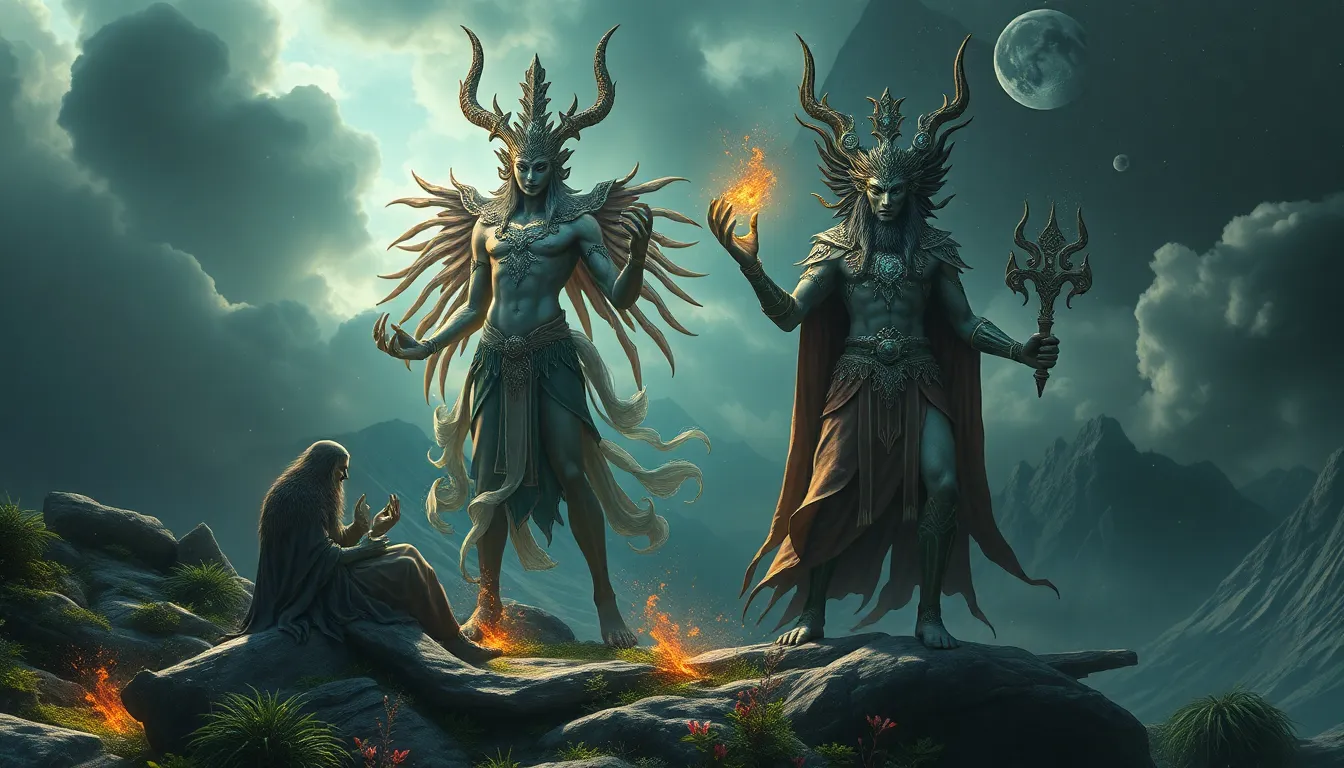Ancient Deities and Their Role in the Balance of Nature
Introduction to Ancient Deities
Ancient deities hold a significant place in the cultural narratives of civilizations around the world. These divine figures were often viewed as powerful beings that influenced various aspects of life, particularly the natural environment. From the fertility of the land to the cycles of the seasons, the relationship between deities and nature is deeply interwoven in mythology and ritual.
The Concept of Nature in Ancient Civilizations
In many ancient cultures, nature was not merely a backdrop for human activity but a living entity that required respect and reverence. The interconnectedness of humans, deities, and the natural world was a central theme in their belief systems. Nature was seen as a reflection of the divine, and the actions of deities directly impacted the environment and the community.
Major Ancient Deities Associated with Nature
Various ancient cultures worshipped deities that embodied elements of nature, each with unique attributes and roles:
- Greek Mythology: Demeter, the goddess of agriculture and harvest, symbolized the earth’s fertility.
- Roman Mythology: Ceres, akin to Demeter, was revered as the protector of crops and the giver of sustenance.
- Egyptian Mythology: Osiris represented the cycle of life, death, and rebirth, closely tied to the flooding of the Nile and agriculture.
- Indigenous Beliefs: Many indigenous cultures worshipped nature spirits and deities who governed specific aspects of the environment, such as animals and plants.
Creation Myths and Their Environmental Implications
Creation myths across cultures often illustrate the relationship between deities and the natural world. For instance:
- In Greek mythology, Gaia, the Earth goddess, emerged from Chaos, representing the foundation of life and nature.
- The Hindu cosmology depicts the divine Vishnu creating the world through his dreams, emphasizing a harmonious balance between chaos and order.
- Many Native American creation stories highlight the role of animals and nature spirits in shaping the earth, teaching lessons about respect and stewardship of the land.
These myths reveal how ancient people understood their place within nature and the importance of maintaining harmony with it.
Rituals and Offerings: Maintaining Balance with Nature
Rituals and offerings were essential practices in ancient cultures, aimed at honoring nature deities and ensuring ecological balance. These practices could include:
- Seasonal festivals to celebrate harvests and honor agricultural deities.
- Offerings of fruits, grains, or animals to appease weather gods, particularly during times of drought or storms.
- Ritual dances and songs dedicated to nature spirits, believed to bring good health to the land and its inhabitants.
Such practices reflected a deep understanding of the interdependence between the human community and the natural environment.
Deities of Agriculture and Crop Fertility
Deities responsible for agriculture played a crucial role in the sustenance of communities. For example:
- Demeter (Greek): Known for her role in the growth cycle of crops, especially wheat, her festivals were integral to agricultural societies.
- Ceres (Roman): Ceres was celebrated during the Cerealia festival, emphasizing the importance of grains in Roman culture.
- Chicomecoatl (Aztec): The goddess of agriculture and sustenance, she was honored to ensure bountiful harvests in Mesoamerican societies.
The veneration of these deities often guided farming practices, seasonal planning, and community gatherings centered around agriculture.
Weather and Storm Deities: Guardians of Balance
Weather deities were seen as the guardians of balance in nature, controlling the elements that could bring both prosperity and destruction:
- Zeus (Greek): As the god of the sky and thunder, he was revered for his control over rain and storms, essential for agriculture.
- Thor (Norse): The god of thunder, Thor was invoked during storms, and his protection was sought for successful harvests.
- Indra (Hindu): As the god of rain and thunderstorms, Indra’s favor was crucial for farmers, who relied on monsoon seasons.
Their roles underscored the belief that the climate and weather patterns were tied to divine favor, with rituals often performed to seek their blessings.
The Role of Animal and Nature Spirits
Animal deities and nature spirits also held significant importance in the ecosystems of ancient cultures. They were believed to embody the spirit of the environment:
- Pan (Greek): The god of the wild, shepherds, and flocks, Pan represented the untamed aspects of nature.
- Totems in Indigenous Cultures: Many Native American tribes revered animal totems, which were believed to offer guidance and reflect the traits of the natural world.
- Inari (Japanese): The deity of rice and fertility, Inari is often depicted with foxes, symbolizing the connection between animals and agriculture.
The reverence for these spirits emphasizes the belief in the importance of biodiversity and the need to coexist harmoniously with nature.
Ancient Wisdom: Lessons for Modern Environmentalism
Ancient beliefs about deities and nature can inform contemporary environmental practices. By recognizing the interconnectedness of life, we can draw parallels to modern issues:
- Understanding the importance of biodiversity can encourage conservation efforts.
- Rituals and community gatherings can foster a sense of responsibility towards the environment.
- Lessons from creation myths can inspire sustainable practices that respect ecological balance.
By integrating these ancient perspectives, modern society can develop a deeper appreciation for the natural world and its preservation.
Conclusion: The Enduring Legacy of Ancient Deities in Nature
In summary, ancient deities serve as a powerful reminder of the intricate relationship between humanity and the natural world. From creation myths to agricultural practices, these divine figures have shaped cultural attitudes towards nature and ecology. Their enduring legacy continues to inspire modern discussions on sustainability and environmental stewardship, urging us to recognize the interconnectedness of all living things.



